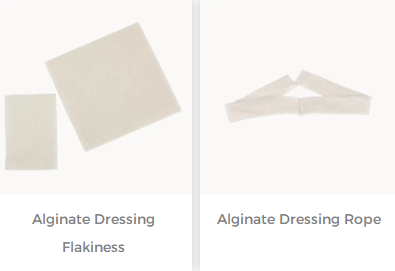Cancerous wounds are a serious challenge in the treatment of cancer patients. It is also one of the common clinical manifestations in the late stage. It is that the local tissue of the patient is invaded by cancer cells, resulting in local skin ulceration or mushroom formation. Cancerous wounds not only cause pain and discomfort, but also exudate, bleeding, pain, and odor, It not only brings great physical and mental pain to the patient but also affects the quality of life of the patient. Thereby affecting the quality of life and treatment effect of patients. Therefore, the focus of cancer wound care is on symptom management, through effective control of symptoms to improve patient comfort, improve patient quality of life, improve patient physical and mental health, and reduce the burden of care for family members. In order to effectively treat cancer For wounds, we need to understand cancerous wounds first.
So what is a cancerous wound?
A cancerous wound is a wound in which the integrity of the tissue has been destroyed during the growth and spread of cancer cells, resulting in damage to the skin or soft tissue. Cancerous wounds are usually caused by cancer surgery, radiation, or chemotherapy, and they can form anywhere on the body, including the extremities, face, chest, and abdomen. Cancerous wounds are characterized by slow healing and are prone to recurrence after wound healing.
Characteristics of cancerous wounds :
Pain: Cancerous wounds often cause severe pain, especially if the wound becomes infected or progresses.
Redness: Around a cancerous wound there is usually redness, warmth, and sometimes oozing and bruising.
Exudation: Cancerous wounds often have exudate, which contains bloody or yellow liquid.
Slow healing: Cancerous wounds heal much more slowly than normal wounds and may take weeks or months to fully heal.
Recurrence: Cancerous wounds are prone to recurrence, especially if the wound has not fully healed after surgery, or if the wound has not fully healed after radiation therapy.
Which functional wound dressing should be used to care for cancerous wounds?
1. Alginate Dressing can be used, which can absorb a large amount of exudate, reduce inflammation and stop bleeding, and promote wound healing while keeping the wound moist and enhancing local bactericidal ability, and Alginate Dressing can effectively protect nerve endings and be easy to remove when changing the dressing.
2. When the wound exudate gradually decreases, switch to the hydrophilic fiber Silver Ion Dressing. It adopts the combination of hydrophilic fiber technology and ionic silver, which can effectively absorb wound exudate, promotes gel formation, and maintain wound moisture; at the same time, when the hydrophilic fiber silver-containing dressing absorbs wound exudate, it slowly releases silver ions, It can achieve long-lasting anti-infection, avoid drug resistance and drug resistance, and promote wound healing.
How to care for a cancerous wound?
Caring for cancerous wounds requires attention to the following:
Keep it clean: Keeping the wound clean and dry is the number one priority in caring for a cancerous wound. Clean the wound regularly, washing with warm water and soap, then drying gently with a clean towel.
Avoid friction: Cancerous wounds need to be protected from friction and pressure, so use a soft dressing or bandage to avoid unnecessary pressure on the wound.
Infection Control: Infection is one of the main causes of fatality in cancerous wounds, so it is imperative to control wound infection. Use an antibiotic ointment or patch and take your temperature and white blood cell count regularly to monitor the progression of the infection.
Use of functional wound dressings: The use of functional wound dressings can well control the infection of cancerous wounds and accelerate wound healing, thus significantly improving wound healing in cancer patients
For more information on Innomed® Alginate Dressing, refer to the previous articles. If you have customized needs, you are welcome to contact us; we will serve you wholeheartedly. At Longterm Medical, we transform this data by innovating and developing products that make life easier for those who need loving care.
Editor: kiki Jia
Date: May 19, 2023

 English
English عربى
عربى Español
Español русский
русский 中文简体
中文简体








